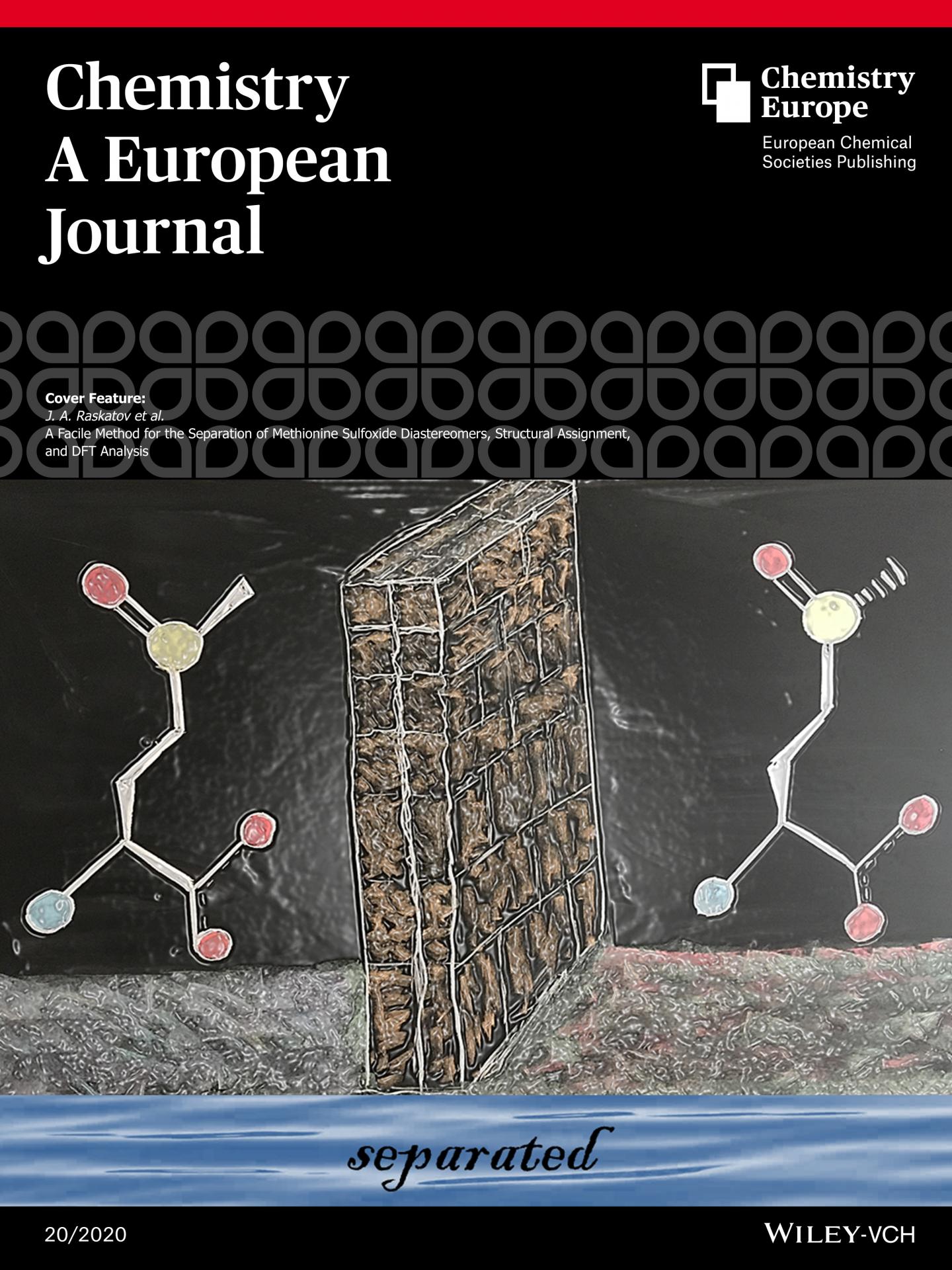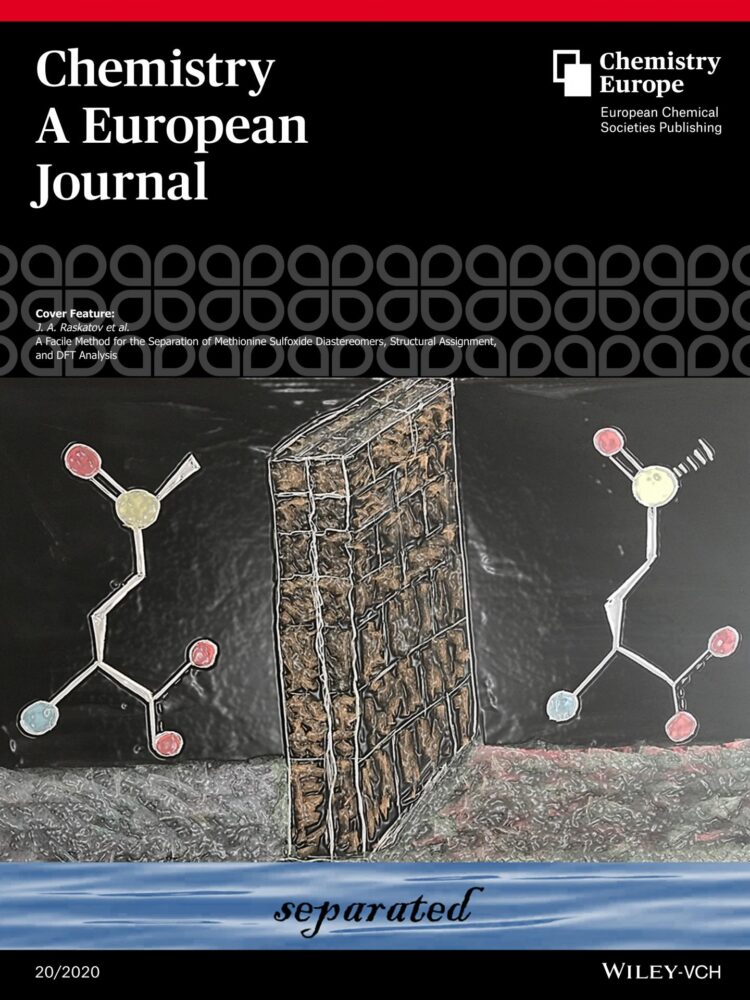UCSC chemists have developed an easy way to separate the stereoisomers of an oxidized amino acid that has important functions in protein biology

Credit: Cover art by J. Raskatov
Proteins are made up of long chains of amino acids, and most proteins have one or more of the sulfur-containing amino acid methionine. Oxidation of the sulfur atom in methionine is an important biomolecular reaction that can have a wide range of biological consequences depending on the context and the protein involved.
Interestingly, the sulfur oxidation of methionine can give rise to two different versions of the oxidized molecule (methionine sulfoxide) differing only in the 3-dimensional spatial arrangement of its atoms. The two versions are called stereoisomers (or, more precisely, diastereomers, which are stereoisomers that are not mirror images). Researchers studying the biological effects of sulfur oxidation would like to be able to separate the two stereoisomers, but this has been extremely difficult to do.
Now, chemists at UC Santa Cruz have reported a new method for separation of methionine sulfoxide diastereomers that opens up new opportunities for studying their roles in biological processes. In a paper published April 6 in Chemistry, A European Journal, they reported obtaining both stereoisomers in purities exceeding 99%.
“The field of methionine oxidation has been hampered for decades by a lack of robust access to these reagents, and we believe this will be a tremendous boost,” said first author Jevgenij Raskatov, assistant professor of chemistry and biochemistry at UC Santa Cruz.
Raskatov’s lab collaborated with researchers at the California Institute of Technology on the paper, which was featured on the cover of the journal. Raskatov said he has already heard from other researchers in the field who are interested in the new method.
Raskatov’s team used an advanced chromatography technique called supercritical fluid chromatography to purify the methionine sulfoxide stereoisomers. Supercritical fluids have the properties of both liquids and gases, which can be very useful in chromatography. The researchers also analyzed the structures of the purified stereoisomers using x-ray crystallography and confirmed their remarkable stereochemical stability.
In addition to Raskatov, the coauthors of the paper include Scott Virgil and Lawrence Henling at Caltech and Hsiau-Wei Lee, Ka Chan, Ariel Kuhn, and Alejandro Foley at UC Santa Cruz.
###
Media Contact
Tim Stephens
[email protected]
Related Journal Article
http://dx.





